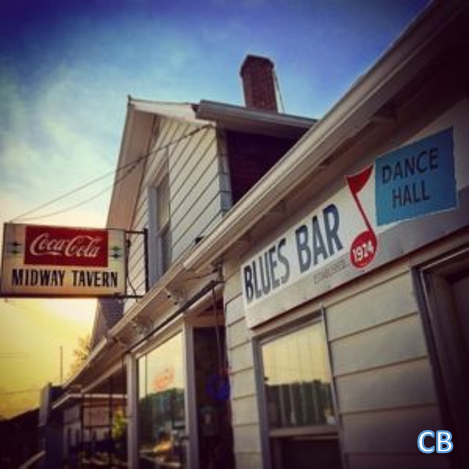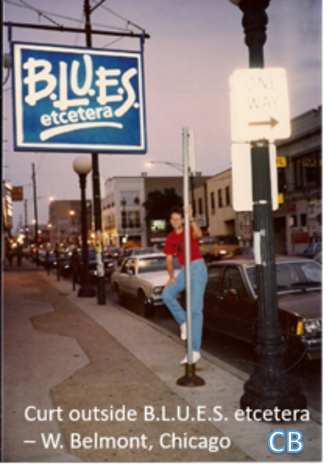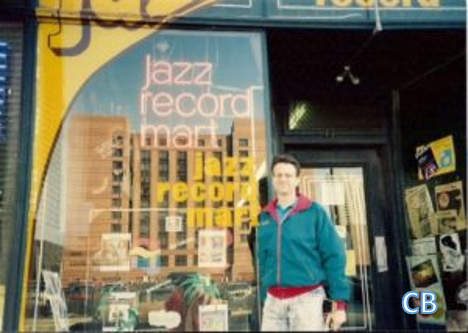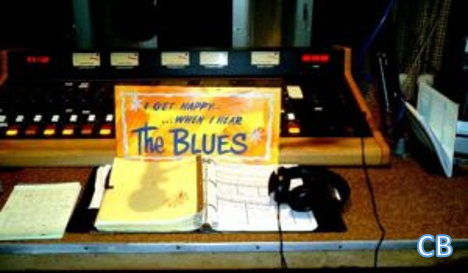About Curt Brown
I have been a blues fan and scholar for the majority of my lifetime.
Due to my home always having been in close proximity to Chicago in north central Indiana USA, I have spent innumerable nights in the city’s famed blues bars and clubs. I have also been able to see many of the blues’ greats that have played shows at various venues in my hometown area, in venues both big and small in size. I have been thrilled to be able to meet and speak with a great many of the legendary blues musicians I so admire. Starting when I wrote a weekly column on the blues for my university newspaper during my undergraduate years, my desire to research and promote the blues has only grown over time. For many years, I hosted a highly successful late-night weekly blues radio show on WSND-FM 88.9, with each show being thematically based upon a certain blues artist, style, region, or instrument. My master’s degree thesis written at Indiana University dealt with the notion of travel in blues lyrics. I have been interviewed about the blues for the local newspaper’s entertainment section. My blues recording collection totals thousands of individual titles. I have also amassed a sizeable assortment of blues show posters and handbills, photos, blues artist autographs, along with other related items. I have a large library of blues-related books authored by the genre’s best researchers and have been a subscriber to Living Blues magazine for 35 years.
I live in north central Indiana, USA, roughly 90 miles east of Chicago; the home of the blues.
The below was my original introduction when I created this blog, and it is provided again for a more fully developed understanding of my arrival to the blues as my passion.
Introduction - How I Arrived At The Blues
All I know is that when I hear the chaotic abandon of J.B. Hutto’s “Speak My Mind”, the haunting dark foreboding of Howlin’ Wolf’s “Smokestack Lightnin’”, the south side Chicago rawness of Magic Slim’s “Give Me Back My Wig”, or the deep melancholy of B.B. King’s “The Thrill Is Gone”, I know I’m where I’m supposed to be. Obviously, others have expressed similar musical sentiments. My feeling about my relationship with the blues is probably best described in a passage by an author whose music writings I greatly admire. Peter Guralnick wrote in his 1971 classic, Feel Like Going Home, “…[It] appealed to something deep seated and permanent in myself, it just sounded right.” I can’t imagine any other way of conveying my connection to the blues. I highly recommend Guaralnick’s great book.
I don’t have the luxury of being able to suggest to you when I first realized that the blues became my lifelong musical passion, but my sense is that it started when I was a teenager. Living in north central Indiana (USA), the touring rock bands of the 1970s had various venues within 90 miles of my home to play, and that made it possible for my friends and I to attend concerts by all the big names. It’s hard to believe now when I look at my surviving ticket stubs from some of those events that, for example, a triple bill of Kansas, Ted Nugent, and Aerosmith in 1977 at Notre Dame’s A.C.C. had a whopping admission price of $7.00 U.S. We traveled between the Fort Wayne Memorial War Coliseum, Notre Dame’s A.C.C., Kalamazoo’s Wings Stadium, South Bend’s Morris Civic Auditorium, the Toledo Speedway, and the Chicago Stadium, along with other venues, to see and hear our musical heroes. For that period’s gasoline price of roughly $.60 per gallon, no cost parking, and the price, perhaps of a McDonald’s meal along the way, we witnessed the best of 1970s rock music in the heyday of the genre at what today are unfathomable total prices. The list of 1970s rock acts we saw is exhaustive in scope. I’m surprised I have any hearing left. The eight-track and cassette tapes I carried around in my high school era vehicles were of my rock heroes. And that was heavy lifting, indeed.
So, how, when, and where did the blues replace rock and roll as my music of choice, my passion, and my constant companion? It’d be easy to say, and true, that many of the 1970s rock bands I was following had a blues undercurrent within their music. Many people who like blues share the same notion of 1970s rock. Without a doubt, Led Zeppelin, Black Sabbath, Foghat, The Rolling Stones, AC/DC, ZZ Top, Black Sabbath, The Amboy Dukes with Ted Nugent, Blue Oyster Cult, Eric Clapton, among many others, had at their roots elements of the blues. Even Bob Seger, with his blue-eyed soul approach, brought the emotional impact that is at the forefront of the blues. I just didn’t recognize it at the time.
I’d also like to be able to state that when reading rock album covers and cassette tape inserts, I was noticing the names of Willie Dixon, Chester Arthur Burnett, McKinley Morganfield, Otis Rush, Marion Walter Jacobs, and others, as the composers of the songs of the bands whose music I was ingesting. I know that this is the pathway by which many blues enthusiasts make the connection between rock and blues, one that then prompts their determination to learn more about these shadowy authors’ names.
But too, that wasn’t the case for me. As I think of this “blues discovery” notion, it’s still very difficult for me to define that “a-ha” moment of clarity when I adopted the blues as my lifelong musical preference. However, I do remember one instance where I was completely swept-up in a moment of new musical awareness that may somehow provide a jumping-off point to my blues passion.
It was October 23, 1980, and I was at the Fort Wayne Memorial War Coliseum to see a twin bill of Black Sabbath and Blue Oyster Cult. The concert pairing was advertised as The Black And Blue Tour. Blue Oyster Cult opened the show, and like many rock shows of the period, venue seating (or standing on the main floor) was on a first-come basis. At the time, it was called “festival seating”. My floor position was as when looking toward the stage, I was slightly left of center. Blue Oyster Cult’s stage set-up was sparse. Allen Lanier was still the band’s keyboardist at the time, I believe, and I remember him seated in somewhat dim stage lighting at an upright piano. His demeanor was a level of confident, yet restrained cool that I had not seen before at a rock concert, playing the role of a man who knew his skills but did not have to be in the limelight to be validated. I was very much struck by Lanier’s honky-tonk manner. As I equated Lanier’s playing and presence later, his approach was akin to a blues piano player whose job it was to entertain, but through his music, and certainly not through self-aggrandizing displays. He was the most “un rock” rock musician I had ever seen. I know that I was very moved by Lanier’s approach, and I now believe it conveyed the weight and burden my blues heroes feel in performance. His was understated conviction. His reserve was a new level of cool that did not need to be bathed in the footlights to be validated.
Stevie Ray Vaughan. For many, including myself, he spun many of our ears in a new direction with his appealing blend of emotional sounds we were not so directly receiving from our favored rock stars. He seemed authentic and powerful, cool yet self-assured. One could argue that perhaps Clapton was a close approximation, but he’s always seemed above the fray with his aloofness. Vaughan’s sounds were great, bordering, at times, on the rock I was preferring, but there was a depth of sentiment apparent that was new and thrilling. I first saw Vaughan on September 6, 1985 at South Bend, Indiana’s Morris Civic Auditorium, a roughly 2,000 seat venue. Attending this show was at the urging of a guy I worked with at the time who was effusive about Vaughan’s music. I knew about Vaughan, but had not purchased any of his music. The U.S. Midwest is a rock hot spot, so I wasn’t initially sure if any tickets were available at such a late hour, as I bought mine only days before the show. But, I was able to snag a seat on the main floor maybe 15 rows back on Vaughan’s side of the stage. While Vaughan pretty much stayed in one spot on-stage, not often looking up, his performance was eye-opening. That deep blues feeling was apparent in his song structure, vocals, and guitar playing. And while perhaps more so than any other influential musical event, this show was another spur that drove me toward the blues.
For quite a number of years, there was one particular record store in South Bend that not only catered to rock and alternative music, but blues, as well. Both locations of Tracks Records were located within a few hundred yards of The University Of Notre Dame, and the manager, Jack, was a roots and blues music fan, in addition to other forms of music. It was especially exciting for me to shop at the store located on Edison Rd., as at that period of my blues awakening, Jack was ordering and receiving many great blues albums by artists and on labels that were new to me. I was always highly-anticipatory of my next visit to the store, as I was certain to feel that rush of uncovering yet another gem of a blues album. When the store moved just a few blocks north, Jack continued his ordering of blues titles, and as time went on, more and more blues was being released on CD, and the store stocked it.
I think it was in 1986 when The Center Street Blues Café opened in Mishawaka, Indiana, my hometown. As the name implies, the club was primarily targeting blues music as its emphasis. Mishawaka is roughly 90 miles east of Chicago, Illinois. Needless to say, at the time of the club’s opening, a great many of Chicago’s blues greats were still alive and vital, and at one time or the other, most played there, if not once, then numerous times over the club’s life of roughly four years. In addition, national traveling blues acts visited the club to perform. Performers and groups I was able to see at The Center Street Blues Café included Lonnie Brooks, Eddie Clearwater with Lester Davenport and Rodney Brown, Jimmy Johnson, Koko Taylor and Her Blues Machine, Lil Ed & the Blues Imperials (actually the opening night act at the club), The Kinsey Report with Big Daddy Kinsey, The James Harman Band, Johnny Littlejohn, Jimmy Dawkins, Ronnie Earl, Clarence “Gatemouth” Brown, John Watkins, Joanna Connors, Ron Thompson & the Resistors, John Hammond, Jr., Tinsley Ellis, Luther Allison, Steve Freund, Dion Payton & the 43rd Street Blues Band, Eddie Kirkland, Professor Eddie Lusk, Phil Guy, Johnny Dollar, Roy Rogers, Pinetop Perkins, Anson Funderburgh & the Rockets with Sam Myers, Luther “Guitar Jr.” Johnson, Valerie Wellington, and Junior Wells, among so many others. The club also features roots acts like Lonnie Mack (who played there many times), Steve Nardella, and The Paladins. Many local blues acts like The Moore Brothers Band, Southside Denny & the Skintones, Dennis Donnelly, and others made the club their home base, as well. Even Mitch Ryder played the club one memorable evening. I even remember John Fogerty of Creedence Clearwater Revival sitting-in one amazing night with Junior Wells, and visiting one additional time when Duke Tomato played the club. I know that I’ve omitted many performers, but it was a bountiful plate of blues that was being served. The club’s spacious yet intimate design and easy-going air made accessibility to the blues artists virtually effortless, and the countless hours I spent there certainly greatly shaped my growing, and continuing, blues infatuation.
Mishawaka was, and still is, home to one main venue for blues activity that shaped my early blues years; The Midway Tavern & Dancehall. The venue is in a residential neighborhood on Mishawaka’s west side, a predominantly working-class neighborhood. The Midway’s lineage dated to at least 1924 when Albertina Wassenhove’s (she just passed away in 2021) parents bought the property, which was previously a luncheon spot and tavern. Sometime in the 1980s, the venue started to offer a full slate of blues in its spacious, yet cozy, back room, and a veritable who’s-who of blues artists from Chicago and all around the country have played The Midway. Pick a blues name, and they probably performed there. Magic Slim, Carey Bell, Louisiana Red, Pinetop Perkins, Willie Smith, Rod Piazza and the Mighty Flyers, Kim Wilson, Barrelhouse Chuck, Little Charlie & the Nightcats, Lazy Lester, Nick Moss, Michael Burks, Gary Primach, Yank Rachell, Sam Lay, Gene Barge, Junior Watson, The Chicago Rhythm & Blues Kings, among so many other big names, have made that great room come alive. Those names do not include the phenomenal sidemen who supported the blues stars like Richard Innes, Bob Stroger, Larry “The Mole” Taylor, Randy Burmudes, Kenny Smith, and Billy Flynn, to name but a few. And to be sure, The Midway has also served as the home base for local acts such as Little Frank & the Premiers, Junior and the Igniters, and others. Its bookings had a huge impact on my ever-growing blues appreciation and knowledge base. Artists were accessible, and many moments were spent in conversation there with them.
In the 1990s, I was able to present Blues Appreciation and Blues Harmonica classes at Indiana University South Bend, the local county library system, and at a local independent musical instrument store. Both classes typically enrolled perhaps a dozen students each when offered, and allowed the sharing of my enthusiasm for the blues with others who may not have had much historical context of the music. Contributing greatly to the Blues Harmonica classes was Tom Moore, a very talented blues harmonica artist, fine vocalist, and bandleader who cuts his chops on the west coast with many of the genre’s giants in the early 1980s. These activities whetted my appetite to pass along my love of the blues to others. I had the support of Alligator Records, as was able to provide free cassette tapes from the label’s vast blues catalog to my students.
The north central Indiana area is home to WVPE-FM 88.1. For over 34 years, Harvey Stauffer has presented a three-hour blues show on Saturday and Sunday afternoons. Additionally, before Harvey’s tenure, the station hosted a pre-war-based blues program. Certainly, having access to such broad blues programming on the radio further stoked my interest in the blues.
When I was an undergraduate student at Indiana University South Bend, I began writing a weekly blues article for the school newspaper, The Preface. This outlet for my blues admiration allowed me to dig deep in research to formulate my articles. It was an instrumental time for my ever-expanding blues obsession.
Certainly, with Chicago being so close to my hometown of Mishawka, Indiana (again, 90 miles), it was always very easy to drive into the city for a number of blues-related reasons. First was to shop at Bob Koester’s Jazz Record Mart, the heart of all things blues and jazz. For me, it was a way to meet and speak with Koester, not only the owner of the Jazz Record Mart, but also the visionary behind the Delmark Records label. Two, it was easy to arrange a weekend in Chicago to visit the city’s various blues clubs, allowing a deep-dive into the blues scene. The Wise Fools Pub, B.L.U.E.S., B.L.U.E.S. etcetera, Rosa’s Lounge, The New Checkerboard Lounge, Buddy Guy’s Legends, and so many other clubs provided the opportunity to see and hear so many blues greats over the years. Chicago is also home to the world’s largest free blues festival, the Chicago Blues Festival, an annual event held in Grant Park. I have utilized these blues resources to the greatest advantage in my blues journey. When I look back, I am astonished at all the great blues music and artists I have met while in Chicago.
WSND FM-88.9 is the student-run radio station of The University Of Notre Dame, an institution that is roughly seven or eight miles west of my residence. The station had a Thursday evening blues radio show that aired from 10pm-12am. Because of my background and devotion to the blues, I was twice tapped to host the show when a student could not be found who wanted to do the show. I actually spent years doing the show, approaching each show from a thematic basis in an attempt to not only entertain my audience, but to educate them as well. I made it my obligation to provide session information for each song I aired, highlight blues from all periods, and to provide as broad a survey of blues as possible. I was always amazed at the folks who would phone the station during my show to talk about the blues. I still have the tapes from all those shows, and to be honest, I miss doing the show greatly.
In roughly 1998, I began my Master’s Degree work in Liberal Studies at Indiana University South Bend. I wanted to study the natural and social sciences and literature that my undergraduate business studies did not allow me access to consider, and the Liberal Studies program offered just such opportunities. The Master’s Degree program required a capstone project picked by the student that was approved, and ultimately critically considered, by a panel of professors. I chose as my capstone project a research effort based upon the notion of travel within blues lyrics, with the work also including an appendix of those blues recordings that should comprise the beginnings of any strong blues music collection. I am proud to say that after a defense of my work before a distinguished panel of professors, my project was bestowed the most positive of acknowledgement, and my Master’s Degree was conferred.
I have enjoyed a subscription to Living Blues magazine since 1988, and have a broad library of blues-related books.
The intervening years have seen my enthusiasm for the blues only increase. After a long career in business (banking), I recently ended that phase of my life. So, what now? I have decided that I want to devote my energies to sharing with you my fervent admiration for the blues via a what I envision as a fan’s blog. The natural question becomes, “In what format will that blog take?” I would like each blog to present an introduction to a particular blues artist, plus, provide two recording reviews (most likely CDs, but, an out-of-print album is not out of the question). One review would be for a collection that is universally considered seminal in the blues realm, and one would be of my choosing.
Here’s, though, where I feel that I can add uniqueness. I truly have deep indebtedness to those writers who provided me countless hours of reading about the blues via their deep-dive academic approaches, leaving no stone unturned while authoring and presenting their work. Because of them, my interest in this great music, blues, only grew. But while that form of blue academia is so vitally important, I’d like to take what I’d call “a kinder, gentler approach” from the standpoint of trying to offer my artist overviews and recording reviews from the viewpoint and tenor of a fan of the blues. I want you to feel like you’re hearing from a friend and/or fellow fan, with all the inherent casualness, honest enthusiasms and disappointments, and yes, perhaps at times, even biases. I don’t want to gush about “flowing glissandos” and “mesmerizing arpeggios”; that’s not my style. In short, I don’t want the blog to be an academic grind to be endured. I don’t want to convey every piece of minutiae on each artist or recording. That’s best left to others; the researchers. I simply want my work to be written and perceived from a blues fan’s perspective. I want you to look forward to each blog from me with an excitement that can only mirror my writing of it. Not every blog will be as lengthy as this introduction, but I wanted to selfishly build my credibility with you. I want you to understand my eager desire to keep the blues alive in your orbit, but most importantly, hopefully grow it in the process. I want you to look forward to my work!
I have a treasure trove of pictures from all the years spent swirling around the blues world, and I’ll spice-up my work with those when I can. I will also provide links to resources as to where you can find the blues collections I review.
I simply want you to have and enjoy a perspective on the blues that will have you thinking, “I wonder what Brown will write about next.” I want you to feel as though you and I share a commonality in our passion for the blues. I want you to feel as though you can relate to my thoughts on the music, or, stir challenges within you to my perspectives.
At some point, will I begin seeking a minimal monthly rate from my readers who enjoy this blog? Yes. But, I see that cost as 1) again, to be minimal, and 2) hopefully completely justified by you as a fellow passionate blues enthusiast. Again, I want to get to the position where you very much look forward to the next blog, and having it provide you moments of targeted happiness in the fervency we both share for the blues. I promise you that I will write with a “value added” mindset. And, I envision the price will be less than a cup of coffee.
Many would say that with the natural demise of many blues artists that obviously continues, it is only reasonable to believe that the blues will die a slow, lumbering death, and as such, will become relegated to museum status. I could not object to such a sentiment with any more vehemence. I could now become offhand and say that Beethoven’s works are 200+ years old, and they are still relevant (which they certainly are), and they remain rejoiced by as an eager a modern-day public as ever. Well, I’d say as long as the human species exists, those emotional feelings that celebrate the highest of highs, and crater our lowest of lows, will continue to exist, and because of this, the blues will always be relatable and necessary.
The first record blues song is considered by many to have been by W.C. Handy in 1912. Though, some researchers believe it to be a work by Mamie Smith in 1920. Or, was it a song by Arthur Seals? Perhaps It was a tune by Bert Williams, as still others suggest. When and where was blues music started? I’ll let the blues scholars sort all that out. Regardless, in some manner, the recorded blues is already well over 100 years old. Yet, it still remains highly-relevant, strong, and vibrant, though the roster of blues artists and stylistic leanings change. The blues continues to mature and adapt; essentially so. But the human condition remains, and as long as that is the case, the blues, in my humble opinion, will plow forward. It must. We might as well celebrate it together as it does. It may already be a museum piece, as some propose, but to walk those glorious halls is time well spent. And we will stroll those blues galleries together.
I look forward to spending that time with you.





